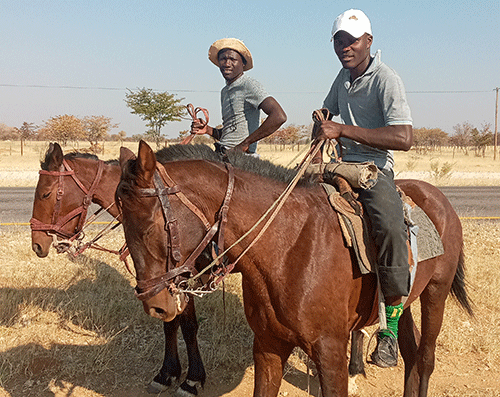Livestock farming is a major livelihood base for much of the population of the Kunene basin, particularly in the middle and lower sections where the climate is dry.
It is from here where many generations of livestock farmers in the Kunene region have emerged.
For those who call this area home, farming is more than an obligation, or a mundane task; it is life.
Papz Tjaveondja and Clinton Tjijeura are part of a large farming community that has grazed their livestock in this area for decades.
When AgriToday caught up with them, they were on their way to Okapyndjia village - some 80km from the regional capital of Opuwo - on horseback.
Tjaveondja, a livestock farmer, said he regards such modes of farming as a great source of livelihood. He has managed to survive off farming for many years.
“Our lives are based on cattle, because we get most of our food from them. Anything we get from our cattle we use,” he added.
He said providing meat as well as milk, which is used for butter, are some of the benefits of keeping livestock such as cattle.
Also, sour milk and traditional butter or ghee is a favourite amongst many livestock farmers.
It is such simplicity of life, Tjaveondja said, that makes livestock farming worthwhile.
“We use our horses as a form of transport. Our life is incomparable.
We like it here. I can have N$200 on me for a month without using it because I have nothing to use it on here,” he smiled.
Tjijeura described their region as unique for its vast landscape and wildlife, in addition to livestock farming.
He said farming has been rewarding for him, and he sees no other way of making a living for himself.
A large percentage of Namibians (25% to 40%) depend on agricultural activities for their livelihoods, mostly in the subsistence sector, the Namibia Statistics Agency shows. A huge number are subsistence farmers.
Subsistence farming is where the farmer only grows enough crops and owns enough livestock to feed himself and his family.
In Namibia, it is mainly confined to the “communal lands” of the country’s populous north, where roaming cattle are prevalent and the main crops are millet, sorghum, corn and peanuts.
Commercial farming contributed between 5%-6% of Namibia’s GDP from 2004-2009, and animal products, livestock and crop exports constituted roughly 10.7% of total Namibian exports.
Cattle grazing is predominant in the central and northern regions, while karakul sheep and goat farming are concentrated in the more arid southern regions.
The government encourages local sourcing of agricultural products.
Retailers of fruits, vegetables and other crop products must purchase 27.5% of their stock from local farmers, according to official statistics.
Table grapes, grown mostly along the Orange River in the country’s arid south, are becoming an increasingly important commercial crop and a significant employer of seasonal labour.


